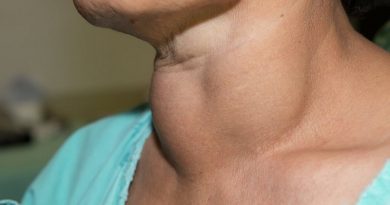What Do Fleas Look Like on a Human? Exploring the Tiny Pests
Have you ever wondered what fleas look like on a human? These pesky creatures are not only a nuisance for our furry friends but can also cause discomfort and irritation to humans. In this article, we will delve into the world of fleas, describing their appearance, behavior, and the impact they can have on our lives. So, let’s get started and uncover the tiny pests that can invade our personal space.
Introduction to Fleas and their Prevalence
Fleas are small, wingless insects that belong to the order Siphonaptera. They are known for their exceptional jumping abilities and their parasitic nature. While fleas are commonly associated with pets, such as dogs and cats, they can also infest humans under certain circumstances.
The Flea Life Cycle
To understand what fleas look like on a human, it is important to comprehend their life cycle. Fleas undergo a complete metamorphosis, consisting of four stages: egg, larva, pupa, and adult. The entire life cycle can take anywhere from a few weeks to several months, depending on environmental conditions. Discover what do fleas look like.
Physical Characteristics of Fleas
Fleas possess distinct physical characteristics that distinguish them from other insects. Understanding these features can help identify and deal with infestations more effectively.
Size and Color
Fleas are incredibly small, measuring between 1 and 4 millimeters in length. They have flat bodies that are laterally compressed, enabling them to move easily through fur, feathers, or even clothing. In terms of color, fleas are usually dark brown or reddish-brown, which helps them blend in with their surroundings.
Body Structure
The body of a flea is divided into three sections: the head, thorax, and abdomen. The head contains a pair of compound eyes and mouthparts adapted for piercing and sucking blood. Fleas also have strong hind legs, enabling them to jump remarkable distances in proportion to their size.
Adaptations for Survival
Fleas are highly specialized parasites that have evolved unique adaptations for survival. They possess bristles and spines on their bodies that aid in their movement through hair or fur. Additionally, fleas have a hard exoskeleton that protects them from being crushed, and they are capable of surviving for extended periods without a host.
Identifying Fleas on Humans
When it comes to identifying fleas on humans, it can be challenging due to their small size and ability to move quickly. However, there are some telltale signs that can indicate a flea infestation.
Itchy Red Bites
One of the most common signs of fleas on a human is the presence of itchy, red bites. Flea bites often appear as small, raised bumps with a red halo around them. They tend to occur in clusters or lines, commonly found on areas of the body exposed to the fleas, such as the ankles, lower legs, and waist.
Allergic Reactions
Some individuals may develop an allergic reaction to flea bites, resulting in more severe symptoms. These can include intense itching, swelling, and the formation of hives. In such cases, seeking medical attention is recommended to alleviate discomfort and prevent further complications.
Visual Confirmation
Although fleas are small, they can sometimes be seen moving on the surface of the skin. If you suspect fleas on your body, carefully examine the affected areas. Pay close attention to areas with hair or places where clothing fits tightly, as fleas prefer these environments.
Preventing and Treating Flea Infestations
Prevention is key when it comes to dealing with fleas. Here are some measures you can take to avoid infestations and protect yourself from these tiny pests.
Protecting Your Pets
Since pets are often the carriers of fleas, regular grooming and proper flea control treatments are essential. Consult with your veterinarian to determine the best preventive measures for your furry friends.
Maintaining Cleanliness
Fleas thrive in dirty and cluttered environments, so keeping your living space clean and vacuuming regularly can help prevent infestations. Pay special attention to areas where pets spend most of their time, such as bedding, carpets, and furniture.
Treating Flea Bites
If you do experience flea bites, there are several steps you can take to relieve the symptoms. Applying a cold compress, using over-the-counter anti-itch creams, and avoiding scratching can provide temporary relief. However, if symptoms persist or worsen, it is advisable to seek medical attention.
In conclusion, fleas can be a nuisance for both animals and humans alike. Their small size and ability to infest various environments make them challenging to detect and eradicate. By understanding what fleas look like on a human and implementing preventive measures, you can protect yourself and your pets from the discomfort and potential health risks associated with flea infestations.
FAQs
Q1: Can fleas transmit diseases to humans?
A1: While fleas are primarily known for causing itching and irritation, they can transmit certain diseases, such as murine typhus and bubonic plague, although such cases are relatively rare.
Q2: How long can fleas survive without a host?
A2: Fleas are remarkably resilient and can survive for several months without a host, especially in favorable environmental conditions.
Q3: Are flea infestations only a problem in homes with pets?
A3: While pets are common carriers of fleas, infestations can occur in any environment where fleas are present, even without pets.
Q4: Can fleas jump onto humans from outdoor areas?
A4: Yes, fleas can jump onto humans from outdoor areas infested with fleas, such as parks or areas frequented by wild animals.
Q5: How can I prevent fleas from infesting my home?
A5: Regularly grooming and treating your pets for fleas, maintaining cleanliness in your living space, and using preventive measures, such as flea collars or sprays, can help prevent infestations.




